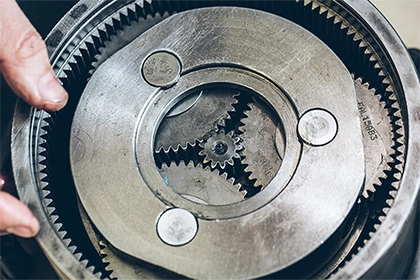
What happens when a 3-phase motor loses a phase?
We'll examine the science underlying this issue and offer helpful advice for solving it in this article.
we all know that 3-phase motors are the backbone of many industrial applications. These machines are the unsung heroes that drive the manufacturing processes that shape our world. With their reliable and efficient operation, 3-phase motors can handle the heaviest of loads. But, like all complex systems, they are not invincible. One of the most common issues that can arise is the loss of a phase. So, what happens when a 3-phase motor loses a phase? In this article, we'll delve into the science behind this problem and provide practical tips for dealing with it.
Firstly, let's define what we mean by "losing a phase." A 3-phase motor is designed to operate with three electrical phases - typically labeled as A, B, and C. If one of these phases is lost, the motor will continue to operate, but it will not function at its full capacity. The remaining two phases will still provide power to the motor, but the loss of one phase will cause a number of issues.
So, what happens when a 3-phase motor loses a phase? The first issue that may occur is reduced torque. With one phase missing, the motor will have a reduced ability to generate the rotational force required to turn the load it is connected to. This reduction in torque can cause the motor to struggle to start, or it may not be able to turn the load at all.
The second issue is increased current draw. With reduced torque, the motor will need to draw more current to compensate for the missing phase. This increased current draw can cause overheating and damage to the motor's windings, potentially leading to a complete motor failure.
The third issue is uneven wear and tear. Without all three phases working together, the motor's components will be subjected to uneven stresses, which can lead to premature wear and tear. This can result in the need for more frequent maintenance and repairs, as well as a shorter overall lifespan for the motor.
Now that we understand the potential issues caused by a lost phase in a 3-phase motor, let's talk about some tips for identifying and addressing the problem.
The first tip is to be aware of the signs of a lost phase. The most common sign is reduced torque, as mentioned earlier. The motor may also make unusual noises or vibrate excessively. In some cases, the motor may not start at all. If you notice any of these signs, it's important to take action quickly to prevent further damage to the motor.
The second tip is to check the power supply. If you suspect that a phase has been lost, the first thing to do is to check the power supply to the motor. Make sure that all three phases are present and that the voltage is within the motor's operating range. If the power supply is not the issue, then motor itself may be the problem.
The third tip is to check the motor's connections. A lost phase can sometimes be caused by a loose or damaged connection between the motor and the power supply. Check all of the motor's connections, and tighten or replace any that are loose or damaged.
The fourth tip is to have the motor inspected by a professional. If you are unsure of what is causing the problem or do not have the expertise to fix the issue, it's important to have the motor inspected by a professional. They will be able to diagnose the problem and provide recommendations for repairing or replacing the motor.
In conclusion, a lost phase in a 3-phase motor can cause a number of issues, including reduced torque, increased current draw, and uneven wear and tear. By being aware of the signs of a lost phase and following the tips for identifying and addressing the problem, you can help to prevent further damage to the motor and ensure that it continues to operate at its full capacity.



Leave a Comment